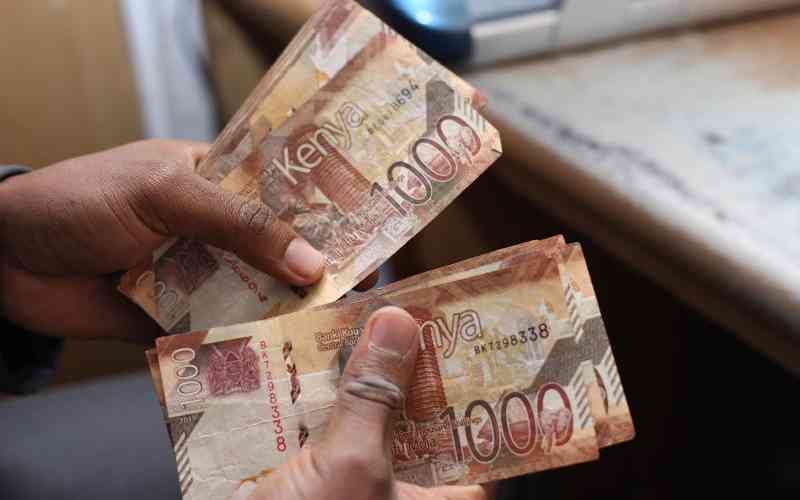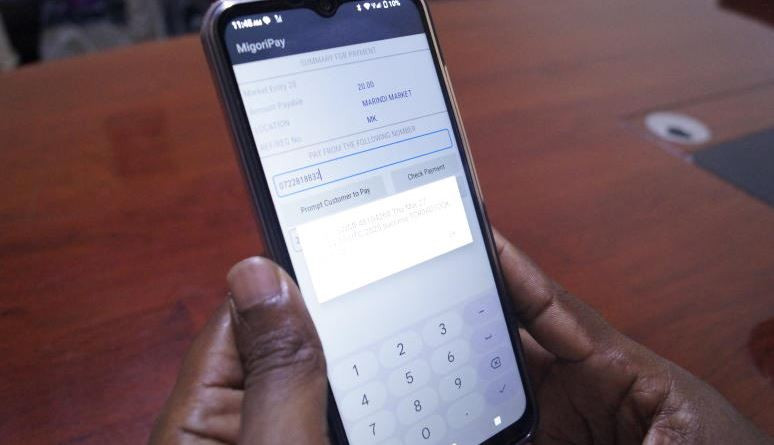
While the Central Bank of Kenya (CBK) is releasing new banknotes with new features, a majority of Kenyans are doing cashless transactions.
Latest CBK data shows approximately 68 per cent of Kenyans are using mobile money services, with the total value of mobile money transactions in Kenya reaching 56.8 per cent of the GDP by the end of 2021 and was projected to rise to 68 per cent by the end of the 2022/2023 fiscal year.
This translates to Kenyans transacting around Sh18 billion daily via mobile money platforms.
Kenyans are using money in their mobile phone lines to make payments, send to other mobile numbers, deposit to bank accounts, withdraw the money as cash, fundraise and get loans.
Extending the reach of financial services in emerging markets is a challenge and opportunity for traditional banks.
Telcos have led the recent development of mobile money products with great success; achieved through the use of innovative technology and agents on the ground.
M-Pesa is a good example. M-Pesa is a mobile payments system developed in Kenya which effectively offers a banking system based on mobile phones.
M-Pesa’s impact in Kenya put mobile money services on the map. There are a number of successful mobile money services around the world that are similar to or result from M-Pesa.
Launched in 2007, it is now used in Afghanistan, Tanzania, South Africa, Bangladesh, Pakistan, India and Romania, among others.
GCash in the Philippines allows users to pay bills, send money, and shop online. Estimates suggest that the system processes more payments than Western Union does across its entire global network.
There are significantly more mobile money outlets than ATMs, in any given location. Welcome to the world of digital currency where Central banks can stop printing hard currencies (physical cash) and transition to using digital currencies through the development of Central Bank Digital Currencies (CBDCs).
Digital currency refers to any currency that is available exclusively in digital form and versions of a country’s official currency issued by the Central Bank.
Digital Currency is primarily intended to serve as money, often with the aim of replacing or complementing physical cash. Several countries and central banks around the world are exploring or have implemented digital currencies.
Stay informed. Subscribe to our newsletter
Here are a few notable examples that include the Chinese digital Yuan or e-GNY, officially known as the Digital Currency Electronic Payment (DCEP), being tested in several cities with plans for broader implementation across China. The Bahamas launched the Sand Dollar in October 2020, making it one of the first fully operational CBDCs.
It aims to improve financial inclusion, especially for residents in remote areas. Sweden’s Central Bank, the Riksbank, is exploring the e-Krona. The project is still in the pilot phase, aiming to understand the implications and potential of a digital currency in a country with declining cash usage.
Launched in October 2020, Bakong is a blockchain-based digital payment system developed by the National Bank of Cambodia. It functions as a quasi-digital currency, facilitating transactions in both the Cambodian riel and the US dollar.
Nigeria launched the eNaira in October 2021, becoming the first African country to introduce a CBDC. It aims to enhance financial inclusion, reduce the cost of transactions, and improve monetary policy effectiveness.
DCash is the digital currency of the Eastern Caribbean Central Bank (ECCB), launched in 2021. It is being piloted in several member countries to enhance payment efficiency and financial inclusion.
Uruguay conducted a successful pilot of the e-Peso, a digital version of its national currency, in 2017-2018. The project aimed to explore the feasibility and potential benefits of a CBDC.
Apple Pay is a digital wallet service integrated with traditional banking and credit systems, whereas mobile money services are often independent financial ecosystems operated by mobile network providers.
Apple Pay is not the same as mobile money, but it is a mobile payment and digital wallet service by Apple Inc. It allows users to make payments in person, in iOS apps, and on the web using their Apple devices.
In the US, Facebook allows users to send and receive money through the Messenger app and Facebook Pay, free of charge. Facebook’s software plays the role of a financial middleman between the sender and the receiver.
It works by digitizing and storing credit and debit card information and using near-field communication to facilitate secure payments.
That means Digital currencies can be integrated with mobile money systems, and such integration could enhance the efficiency, reach, and functionality of both technologies.
 The Standard Group Plc is a
multi-media organization with investments in media platforms spanning newspaper
print operations, television, radio broadcasting, digital and online services. The
Standard Group is recognized as a leading multi-media house in Kenya with a key
influence in matters of national and international interest.
The Standard Group Plc is a
multi-media organization with investments in media platforms spanning newspaper
print operations, television, radio broadcasting, digital and online services. The
Standard Group is recognized as a leading multi-media house in Kenya with a key
influence in matters of national and international interest.
 The Standard Group Plc is a
multi-media organization with investments in media platforms spanning newspaper
print operations, television, radio broadcasting, digital and online services. The
Standard Group is recognized as a leading multi-media house in Kenya with a key
influence in matters of national and international interest.
The Standard Group Plc is a
multi-media organization with investments in media platforms spanning newspaper
print operations, television, radio broadcasting, digital and online services. The
Standard Group is recognized as a leading multi-media house in Kenya with a key
influence in matters of national and international interest.






